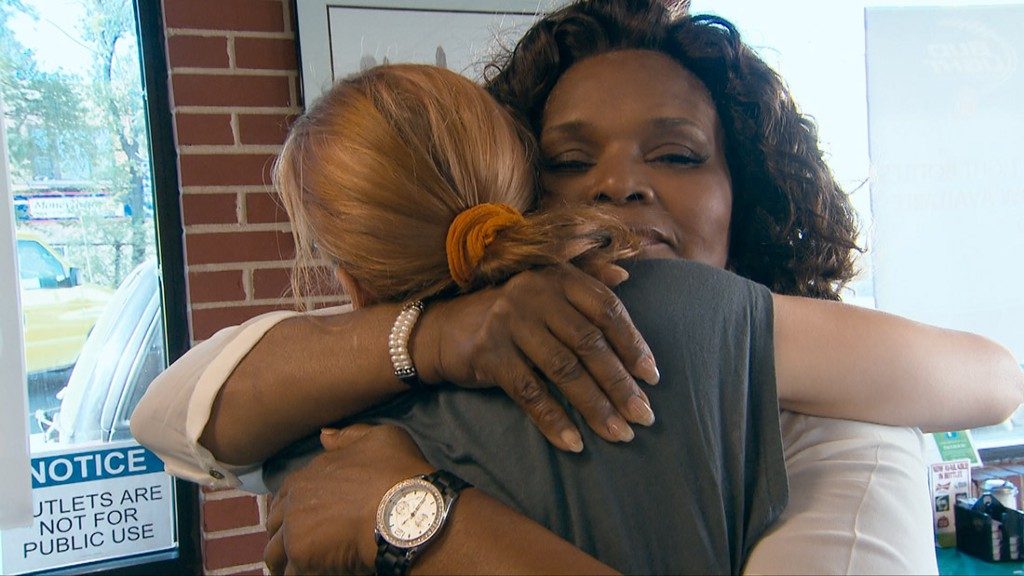One of the foremost documentary filmmakers working today, Kim Longinotto is renowned internationally for her compellingly human portraits and her sensitive and compassionate treatment of difficult topics. By seeking out, observing, and following the untold stories of women’s daily lives, she has created cinéma vérité portraits of the larger society and cultural customs. (MoMA)
Dreamcatcher will premiere at the 2015 Sundance Film Festival on January 25.
W&H: Please give us your description of the film playing.
KL: Dreamcatcher shows Brenda Myers-Powell helping young women in Chicago find the strength to change their lives and free themselves from abusive situations.
W&H: What drew you to this story?
KL: Brenda is a charismatic, inspiring person, and I could see that her story would make a compelling film.
W&H: What was the biggest challenge in making the film?
KL: It’s always scary making a film as I never set anything up or ask anyone to do anything, so I worry that we’ll find a story. I have to trust that a film will come out of the journey we embark on. I have many, many sleepless nights.
W&H: What do you want people to think about when they are leaving the theatre?
KL: I want people to have had an emotional, life-affirming experience and to feel that the film resonates in their own lives. I try to make films where the audience forgets the filmmaking and gets engrossed in the story as it unfolds. I don’t want them to ever feel bored, or that they’re being told what to think, or to feel depressed. I don’t like films about victims — I want to celebrate brave survivors like Brenda and the wonderful women in the film.
W&H: What advice do you have for other female directors?
KL: I don’t have any advice at all. I think we all make the films that reflect the kind of people we are; we all make such different films. There’s not just one way of doing it.
W&H: What’s the biggest misconception about you and your work?
KL: I don’t know. Perhaps that I film all the time and film everything randomly. The truth is I film very little and always when something excites me and seems to mean something for the film. I want every scene to feel electric and I try to finish the filming period with a clear trajectory: a beginning, a middle, and hopefully an end. I hate “fly on the wall.” It infers that I don’t relate to the people we’re with and that I don’t get affected by events. I like it when people talk to me. I never say things like “Don’t look at the camera” — how bossy!
W&H: How did you get your film funded? Share some insights into how you got the film made.
KL: No one in UK TV would give us the money. It’s where I’ve always managed to get funding before. The commissioning editors we went to asked things like “How will this film be different?” and “Why do we need this film?” I answered truthfully: “I don’t know.” Of course that was the end of it. Producer Teddy Leifer raised the money from lovely people in the USA who were prepared to take the risk.
W&H: Name your favorite woman-directed film and why.
KL: I loved The Silence of the Palaces. It’s an old film made by Tunisian director Moufida Tlatli. I also liked Sister (L’enfant D’en Haut) [by Ursula Maier]. Orange is the New Black is fun. The Lives of Others [by Susanne Bier] changed my life. I love that film.






